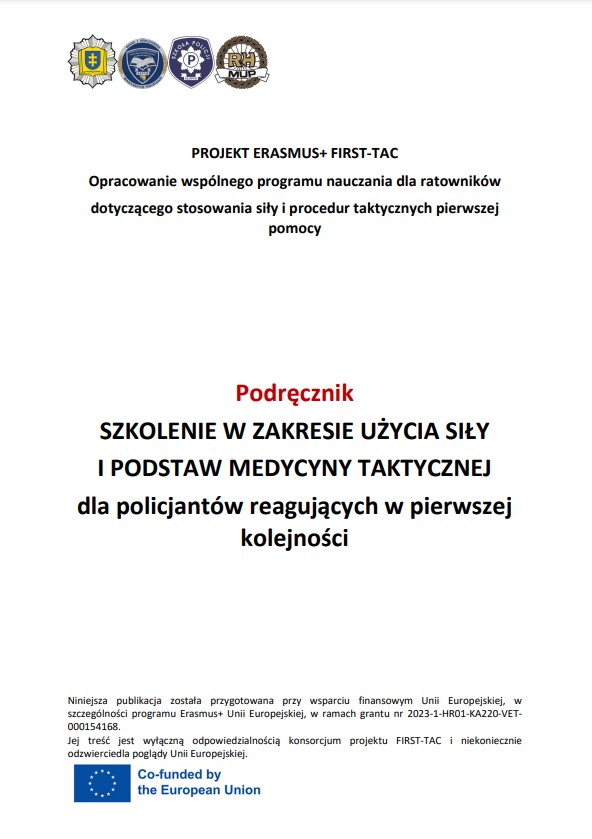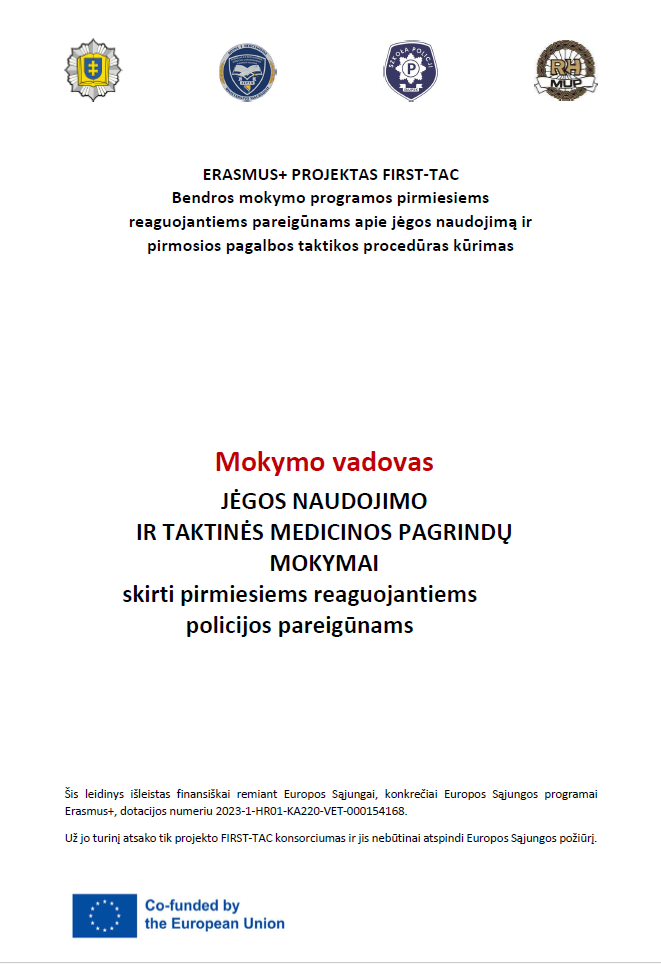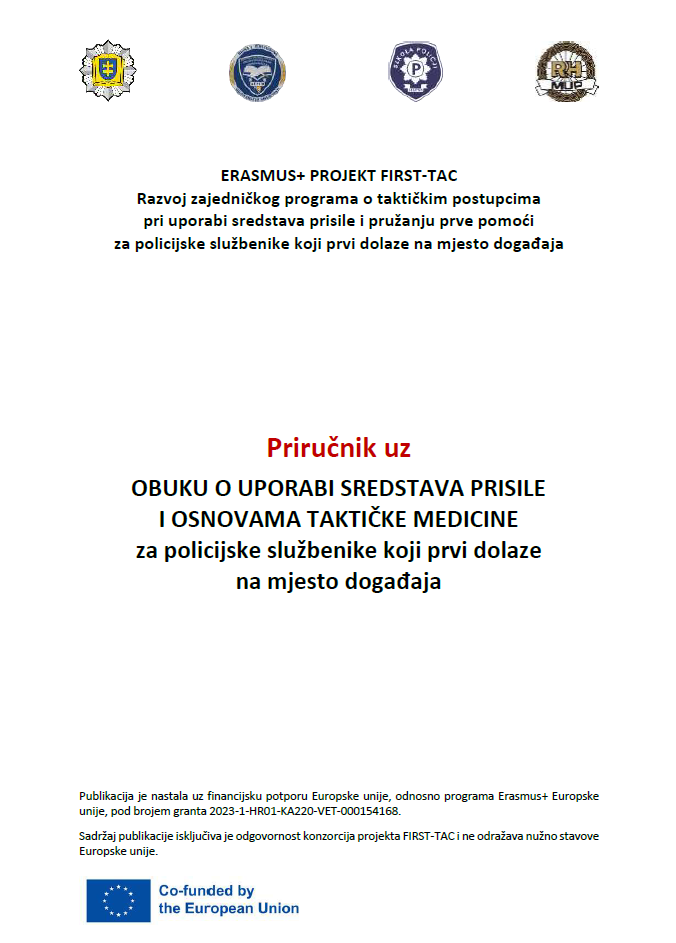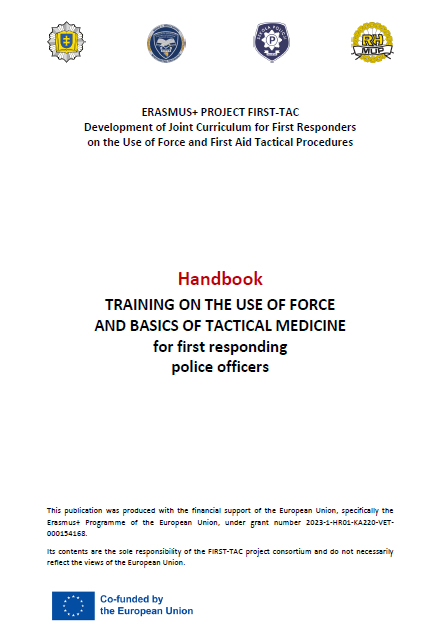Handbook TRAINING ON THE USE OF FORCE AND BASICS OF TACTICAL MEDICINE for first responding police officers
This Handbook is developed for the trainers in the use of force and the basics of tactical medicine. The idea was to create a comprehensive package with everything that a trainer needs in order to plan and implement a training in the mentioned two areas.
It consists of three parts. The first part includes the curriculum itself, along with clarifications and recommendations related to its implementation. In the second part, trainers will find detailed topic plans, with possible solutions for specific teaching units, which include learning outcomes, learning content, learning methods, description of training environment and facilities, as well as the training equipment and the duration of the unit. The second part includes three simulation exercises as well. They should be seen as formative assessment of sort, through which both trainers and learners can assess the progress made. That is why the exercises include marking rubrics as well, with no pass or fail recommendations, but with critical mistakes clearly stated. The third part compiles learning material. It is recommended to be introduced to the learners prior to the practical part of the training, as it covers theoretical introduction to the training topics. It can easily be translated to the PowerPoint presentations and quizzes, such as in this e-learning virtual classroom: https://e-obrazovanje.fkz.hr/course/view.php?id=1172.
It should be mentioned that all the topic plans, simulation exercises, and learning material are just a recommendation, and trainers can and should adapt it to their learners and/or teaching preferences. With the material in this Handbook, and with their own knowledge and experience, trainers will be able to plan and implement a learner-centred training focused on reaching learning outcomes.

Handbook Polish
 Handbook Lithuanian
Handbook Lithuanian
 Handbook Croatian
Handbook Croatian
It consists of three parts. The first part includes the curriculum itself, along with clarifications and recommendations related to its implementation. In the second part, trainers will find detailed topic plans, with possible solutions for specific teaching units, which include learning outcomes, learning content, learning methods, description of training environment and facilities, as well as the training equipment and the duration of the unit. The second part includes three simulation exercises as well. They should be seen as formative assessment of sort, through which both trainers and learners can assess the progress made. That is why the exercises include marking rubrics as well, with no pass or fail recommendations, but with critical mistakes clearly stated. The third part compiles learning material. It is recommended to be introduced to the learners prior to the practical part of the training, as it covers theoretical introduction to the training topics. It can easily be translated to the PowerPoint presentations and quizzes, such as in this e-learning virtual classroom: https://e-obrazovanje.fkz.hr/course/view.php?id=1172.
It should be mentioned that all the topic plans, simulation exercises, and learning material are just a recommendation, and trainers can and should adapt it to their learners and/or teaching preferences. With the material in this Handbook, and with their own knowledge and experience, trainers will be able to plan and implement a learner-centred training focused on reaching learning outcomes.

Handbook Polish
 Handbook Lithuanian
Handbook Lithuanian Handbook Croatian
Handbook Croatian

